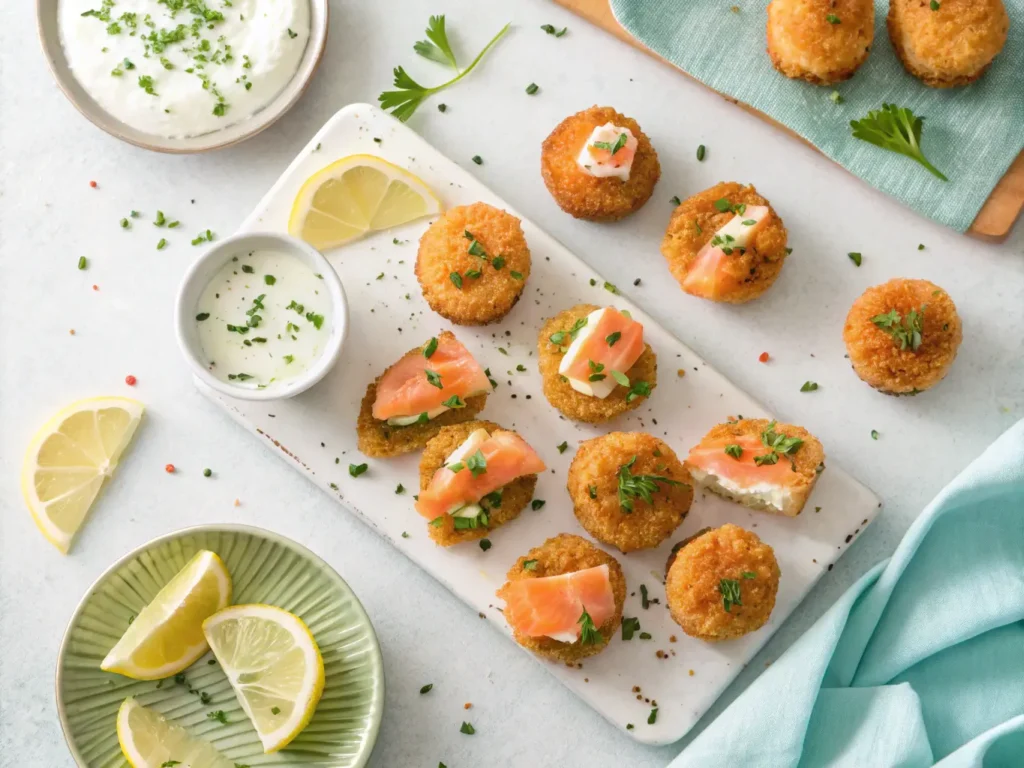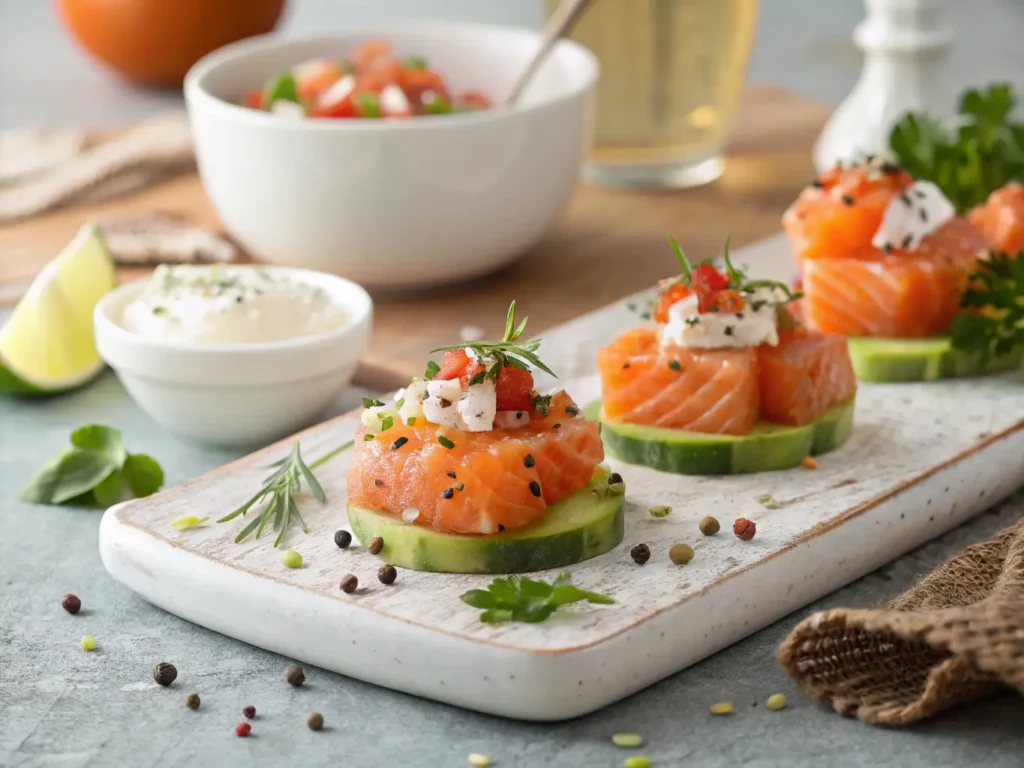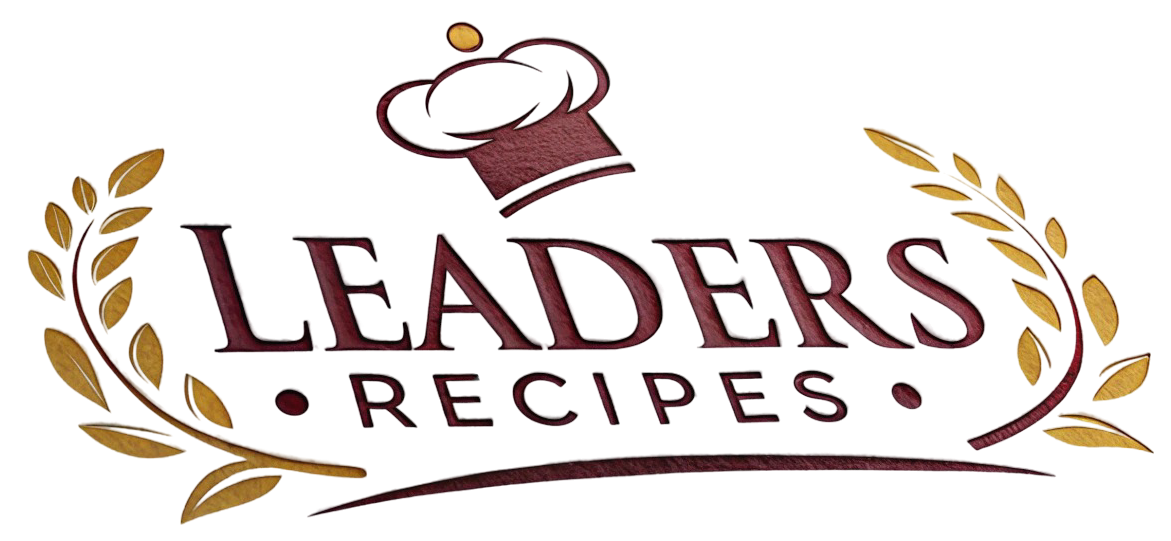Table of Contents
Salmon bites are a delicious and versatile option for anyone looking to enjoy protein-packed meals that are quick to prepare and easy to serve. Whether you need a quick snack, a healthy appetizer, or a main course, salmon bites deliver on all fronts. These bite-sized pieces of fresh, flavorful salmon can be cooked in various ways—pan-fried, baked, grilled, or even air-fried—giving you multiple options to suit your preferences.
Not only are salmon bites a great source of protein, but they are also rich in omega-3 fatty acids, making them an ideal choice for anyone looking to improve their heart health and overall wellness. Additionally, salmon is packed with essential vitamins and minerals like vitamin B12, vitamin D, and selenium, which contribute to healthy bones, brain function, and a strong immune system.
In this guide, we’ll walk you through everything you need to know to make the perfect salmon bites. From choosing the right salmon and seasoning options to cooking methods and serving suggestions, we’ve got it all covered to help you create a meal everyone will love. Whether you’re preparing for a party, meal prep, or a quick weeknight dinner, these salmon bites are sure to impress!
What Are Salmon Bites ?
Definition and Key Characteristics
Salmon bites are small, cube-shaped pieces of fresh salmon that are seasoned or marinated, then cooked to perfection. These bite-sized portions are not only easy to eat but also offer a great way to enjoy the health benefits of salmon in a fun, versatile form. Salmon bites recipe can be served as an appetizer, snack, or part of a main course, making them perfect for a variety of occasions.
Typically, salmon bites recipe are seasoned with a variety of spices and marinades, such as garlic powder, lemon juice, teriyaki sauce, or paprika, before being cooked. You can either bake, fry, grill, or air fry them, depending on your preferred method and how crispy you want the exterior. The tender, flaky texture of the cooked salmon inside balances wonderfully with a crispy exterior, resulting in a mouthwatering dish.
Why They’re So Popular
The popularity of salmon bites stems from their convenience and customizability. Whether you want them for a party appetizer, a protein-packed snack, or a light main dish, salmon bites recipe can be adapted to suit various dietary preferences. They’re a crowd-pleaser at parties, easy to meal prep for the week, and can be quickly prepared in just a few minutes. Furthermore, salmon is a nutrient-dense fish, rich in omega-3 fatty acids, which promote heart health and support brain function. This makes salmon bites recipe a perfect choice for anyone seeking a healthy yet satisfying dish.
Types of Salmon Bites
There are several ways to prepare salmon bites recipe, each offering a different texture and flavor:
- Pan-Fried Salmon Bites: This method results in a golden, crispy exterior with a tender and juicy interior.
- Baked Salmon Bites: Baked at high temperatures, these bites have a healthier profile and are easy to make in large batches.
- Air-Fried Salmon Bites: Air frying offers a crispy texture with significantly less oil, making it a health-conscious option.
- Grilled Salmon Bites: Grilled bites are perfect for adding a smoky flavor and those irresistible grill marks.
Each cooking method brings out different qualities in the salmon, so feel free to experiment to find your favorite style!
Health Benefits of Salmon Bites
High in Omega-3 Fatty Acids
One of the key health benefits of salmon bites is their high omega-3 fatty acid content. Omega-3s are essential for maintaining a healthy heart and improving brain function. Studies show that consuming omega-3-rich foods like salmon can help reduce inflammation, lower blood pressure, and even improve cognitive function. Salmon is also a good source of healthy fats, making it an ideal choice for those looking to include more heart-healthy fats in their diet.
Rich in Protein
Salmon bite are a high-protein meal, providing the essential amino acids your body needs for muscle repair and growth. Protein is crucial for satiety and can help you feel full longer, making salmon bite recipe a great option for anyone looking to maintain a healthy weight or build lean muscle mass.
Packed with Essential Nutrients
Salmon is a nutrient-dense food that offers a wide array of vitamins and minerals, including:
- Vitamin B12: Essential for the production of red blood cells and proper nerve function.
- Vitamin D: Supports healthy bones and the immune system.
- Selenium: A powerful antioxidant that helps protect cells from damage.
- Potassium: Important for regulating blood pressure and supporting heart function.
These nutrients make salmon bite not only delicious but also a nutritional powerhouse.

Ingredients for Salmon Bites
Core Ingredients
To make salmon bites, you will need:
- 1 lb fresh salmon fillets (skinless)
- 2 tbsp olive oil (for cooking)
- Salt and pepper, to taste
- 1 tsp garlic powder
- 1 tbsp fresh lemon juice
These basic ingredients form the foundation for your salmon bites, allowing the natural flavor of the fish to shine through.
Optional Seasonings and Marinades
For extra flavor, consider adding some of these ingredients:
- Soy sauce or teriyaki sauce for a salty-sweet profile
- Honey or brown sugar for a sticky glaze
- Paprika or Old Bay seasoning for a smoky, spiced flavor
- Chili flakes for a bit of heat
- Fresh herbs like dill, parsley, or chives for a fresh, aromatic finish
Feel free to experiment with these optional seasonings to tailor the flavor of your salmon bites to your liking.
Toppings and Garnishes
To make your salmon bites even more delicious, top them with:
- Lemon wedges for an extra citrus kick
- Sesame seeds for a light crunch
- Green onions for color and added flavor
- Dipping sauces like aioli, garlic butter, or yogurt-based dips for extra richness
These garnishes will add the finishing touch to your salmon bites and elevate the dish.
Equipment Needed to Make Salmon Bites
Essential Cooking Tools
To prepare salmon bites, you will need:
- Knife for cutting the salmon into bite-sized pieces
- Cutting board for easy prep
- Mixing bowl to toss the salmon with seasonings or marinades
- Tongs for handling the salmon while cooking
Cooking Methods and Equipment
Depending on how you choose to cook your salmon bites, you may need:
- Baking sheet for baked salmon bites
- Skillet for pan-frying
- Air fryer for crispy salmon bites with less oil
- Grill for grilling on skewers or in a grill basket
Optional Accessories
- Parchment paper for easy cleanup
- Food thermometer to ensure your salmon reaches the ideal internal temperature (145°F)
Step-by-Step Instructions for Making Salmon Bites
Step 1: Preparing the Salmon
Start by cutting the fresh salmon fillets into bite-sized cubes. Use a sharp knife and ensure that each piece is of similar size for even cooking. If you prefer, you can remove the skin before cutting the salmon into pieces.
Step 2: Seasoning or Marinating
In a mixing bowl, toss the salmon cubes with olive oil, salt, pepper, and your choice of seasonings. For extra flavor, marinate the salmon in the refrigerator for about 30 minutes to allow the seasonings to infuse.
Step 3: Cooking the Salmon Bites
Choose your preferred cooking method:
- Pan-Fried: Heat a skillet over medium-high heat, add a bit of oil, and cook the salmon bite for about 2-3 minutes per side until golden and crispy.
- Baked: Preheat your oven to 400°F. Place the salmon bite on a baking sheet lined with parchment paper and bake for about 12-15 minutes, or until the salmon flakes easily with a fork.
- Air-Fried: Preheat your air fryer to 375°F and cook the salmon bite for 8-10 minutes, shaking the basket halfway through for even cooking.
- Grilled: Skewer the salmon cubes and grill them over medium heat for 3-4 minutes per side, ensuring they’re cooked through.
Step 4: Checking for Doneness
To check if your salmon bites are cooked, insert a food thermometer into the center of one of the pieces. The ideal temperature for cooked salmon is 145°F. Alternatively, you can check for doneness by gently pressing the salmon with a fork—if it flakes easily, it’s ready.
Step 5: Plating and Serving
Transfer the cooked salmon bite to a serving platter. Garnish with lemon wedges, green onions, or sesame seeds and serve with your favorite dipping sauce.
Cooking Methods for Salmon Bites
Pan-Fried Salmon Bites
Pan-frying is a great way to get a crispy, golden exterior while keeping the salmon inside tender and moist. Simply heat a little oil in a skillet and cook the salmon bite for about 2-3 minutes per side. This method works best for smaller batches of salmon bite.
Baked Salmon Bites
Baking is the healthiest cooking method for salmon bite. Preheat the oven to 400°F, arrange the salmon bite on a baking sheet, and bake for 12-15 minutes until golden. This method doesn’t require much oil, making it a lighter option.
Air-Fried Salmon Bites
Air frying offers a crispy texture with little to no oil. Preheat your air fryer to 375°F and cook the salmon bite for 8-10 minutes. This method is perfect for those who want crispy bites without the added fat.
Grilled Salmon Bite
Grilling adds a smoky flavor to the salmon. Skewer the salmon cubes or place them in a grill basket and cook them on medium heat for 3-4 minutes per side. Grilling is perfect for creating those charred grill marks and adds a flavorful touch.
Tips for Perfect Salmon Bites
Choosing the Right Salmon
For the best flavor and texture, use fresh, wild-caught salmon. This ensures that your salmon bite will have a richer taste and a firmer texture compared to frozen salmon.
Avoid Overcooking
To avoid dry, overcooked salmon, make sure you cook your bites only until they reach 145°F. Overcooking will result in a rubbery texture, so keep an eye on the cooking time.
Getting Crispy Edges
To achieve crispy edges, try pan-frying or air-frying your salmon bite. These methods create a golden, crispy crust while keeping the inside juicy and tender.
Variations of Salmon Bites
Classic Garlic Butter Salmon Bite
Coat your salmon bite in garlic butter for a rich, savory flavor that complements the natural taste of the salmon.
Honey Garlic Salmon Bites
Toss the salmon bite in a sticky honey garlic glaze for a sweet and savory combination that’s absolutely irresistible.
Teriyaki Glazed Salmon Bites
For an Asian-inspired flavor, use teriyaki sauce to glaze the salmon bite before cooking them.
Lemon Pepper Salmon Bites
For a zesty twist, coat the salmon bite with lemon juice, pepper, and garlic powder for a fresh, bright flavor.
Spicy Cajun Salmon Bites
If you like heat, toss the salmon bite in Cajun seasoning or chili powder for a spicy kick that will wake up your taste buds.
Serving Suggestions for Salmon Bite
As a Party Appetizer
Serve the salmon bite on a platter with toothpicks for easy serving. Add a few dipping sauces on the side, such as garlic butter or aioli, for extra flavor.
As a Protein-Packed Meal
Pair the salmon bite with rice, quinoa, or a fresh salad for a healthy, balanced meal that will keep you full and satisfied.
Pairing with Side Dishes
Serve your salmon bite alongside steamed vegetables, garlic bread, or mashed potatoes for a hearty, complete meal.
Meal Prep and Storage Tips
How to Store Leftovers
Store your leftover salmon bite in an airtight container in the refrigerator for up to 3 days.
Freezing Instructions
You can freeze both uncooked and cooked salmon bite. To freeze uncooked salmon bite, place them in a single layer on a baking sheet and freeze until solid before transferring them to a freezer bag. To freeze cooked salmon bite, place them in an airtight container, and store for up to 2 months.
Reheating Tips
Reheat the salmon bite by placing them in the air fryer, oven, or on the stovetop. This helps maintain their crispy texture and moist interior.
Health and Customization Options
Making Low-Carb/Keto Salmon Bites
Skip the use of flour or breadcrumbs and add low-carb vegetables like zucchini or cauliflower rice as a side dish.
Gluten-Free Variations
Ensure that all seasonings, marinades, and sauces used are gluten-free to make these bites safe for those with gluten sensitivities.
Vegan and Plant-Based Alternatives
Substitute tofu or tempeh for the salmon to create a plant-based version of salmon bite that’s just as flavorful.

Common Mistakes to Avoid
Overcooking the Salmon
Overcooking will result in dry, chewy salmon bite. Be sure to cook the salmon to an internal temperature of 145°F.
Uneven Cooking
Cut the salmon into even-sized pieces to ensure that they cook uniformly and avoid undercooked or overcooked pieces.
Not Using Fresh Salmon
Fresh salmon delivers the best flavor and texture. Frozen salmon can sometimes be mushy and less flavorful after cooking.
FAQs
Can I make salmon bites ahead of time?
Yes, you can prepare the salmon bite in advance and refrigerate them for up to 24 hours before cooking.
How do I store leftover salmon bites?
Store the leftover salmon bite in an airtight container in the refrigerator for up to 3 days.
Can I freeze cooked salmon bites?
Yes, you can freeze cooked salmon bite for up to 2 months. Reheat them in the air fryer or oven.
What’s the best cooking method for crispy salmon bites?
Pan-frying and air-frying provide the crispiest salmon bite. These methods ensure a golden, crispy exterior without drying out the salmon.
Can I make salmon bites without oil?
Yes, you can bake or air fry salmon bite without oil. Using parchment paper or a non-stick pan helps prevent sticking.
Can I make salmon bites in the air fryer?
Yes, air frying salmon bites gives them a crispy texture with less oil. Preheat your air fryer to 375°F and cook for 8-10 minutes.
Conclusion
Salmon bites recipe are a quick, healthy, and versatile option for any occasion, from weeknight dinners to party appetizers. With their protein-packed benefits, easy preparation, and customizable flavors, these salmon bites recipe are sure to become a favorite in your kitchen. Try them today, and enjoy a nutritious meal that’s as delicious as it is satisfying!

